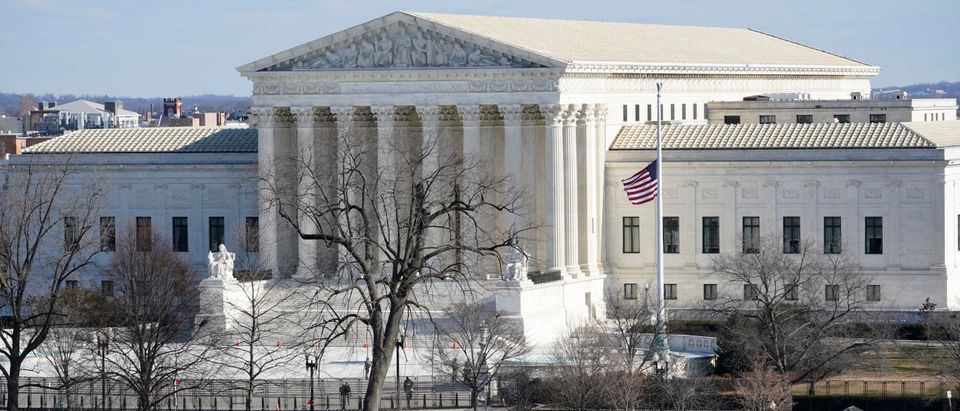On April 9, President Joe Biden signed an executive order forming “the Presidential Commission on the Supreme Court of the United States,” comprised of a so-called bipartisan group of 36 experts on the Court and the Court reform debate. I say “so-called” because only 8 of the 36 members are not on the political Left, almost none have previously proposed serious reform and 36 is an unwieldy number. Moreover, seemingly all of the commission’s members are friends of the commission’s co-chairs, Bob Bauer and Cristina Rodriguez, who are themselves FOJ (i.e., friends of Joe).
More important still, Biden’s announcement specified that the “topics” the commission will examine include “the genesis of the reform debate; the Court’s role in the Constitutional system; the length of service and turnover of justices on the Court; the membership and size of the Court; and the Court’s case selection, rules, and practices.”
Missing from the president’s list is the most important reform topic of all: how to better insulate the Supreme Court from the hyper-partisanship that has corrupted the appointment process in recent years. Nominees are now selected because they supposedly check certain political boxes — especially the box about voting the way the president hopes they will vote — and senators vote for or against a nominee’s confirmation on the basis of how the particular senator thinks the nominee will vote in specific cases. Age — specifically, youth — also has come to dominate the process because the president — then-President Donald Trump, especially — wants the judge to serve on the bench for three decades or more.
Two recent examples come quickly to mind. The first involved the battle over filling Justice Antonin Scalia’s seat that began the moment his death became public during President Barack Obama’s final year in office. The Democratic president said: “I plan to fulfill my constitutional responsibilities to nominate a successor.”
Sen. Mitch McConnell, the Republican majority leader at the time, countered minutes later that, “The American people should have a voice in the selection of their next Supreme Court justice. Therefore, this vacancy should not be filled until we have a new president.” The candidates for the Republican presidential nomination — including Trump — were united in their support of McConnell’s position. President Obama nominated Merrick Garland to the Supreme Court, but the Senate refused to hold a confirmation hearing.
But when the partisan fortunes were reversed during Trump’s presidency, then-Democratic presidential nominee Biden and his party wanted to wait to fill the late-Justice Ruth Bader Ginsburg’s seat, while Trump, McConnell and all but a small handful of the Republican members of the Senate insisted on fulfilling their “constitutional responsibilities” prior to an election that was less than two months away. Trump nominated Amy Coney Barrett, and the Senate confirmed her 52-48 a week before the 2020 election with only one Republican voting against the nominee and no Democrats voting to confirm her.
Unfortunately, the real fight over filling Ginsburg’s seat, as it was over filling Scalia’s seat, was about partisan politics: Trump and the Republican-controlled Senate wished to cement their legacy by appointing a conservative to replace the liberal Ginsburg, whereas Biden and the Democrats wanted to wait until after the election because they hoped that Biden would be the next president and that the Democrats would win control of the Senate.
Partisan usage of the appointment process is not what the original understanding of the Constitution demands. Instead, the original understanding is for, to quote James Madison, “a bench happily filled” with the esteemed likes of “[George] Wythe, [John] Blair, and [Edmund] Pendleton”: leading jurists of Madison’s day. The debates during the Constitutional Convention of 1787 were silent on the criteria for appointment precisely because the delegates assumed that the basis of selection would be merit. Even Alexander Hamilton, who saw a limited role for the Senate in the appointment process, believed that the Senate could — and should — reject a nominee who was lacking in merit. “Thus it could hardly happen,” Hamilton wrote in The Federalist Papers, “that the majority of the Senate would feel any other complacency toward the object of an appointment than such as the appearance of merit might inspire and the proofs of the want of it destroy.”
Although the vast majority of so-called experts appear to believe that, given the realities of constitutional politics, a merit-based appointment process is not realistic, I disagree. To borrow from the late Henry Abraham, almost certainly the leading scholar of the appointment process who ever lived, “merit need not, indeed does not, ‘lie in the eye of the beholder,’ It is eminently identifiable and attainable.”
Frankly, we would not need a presidential commission on Supreme Court reform if our political leaders would stop playing politics with the appointment process.
Scott Douglas Gerber is a law professor at Ohio Northern University and an associated scholar at Brown University’s Political Theory Project. His nine books include “A Distinct Judicial Power: The Origins of an Independent Judiciary, 1606-1787” (Oxford University Press).


